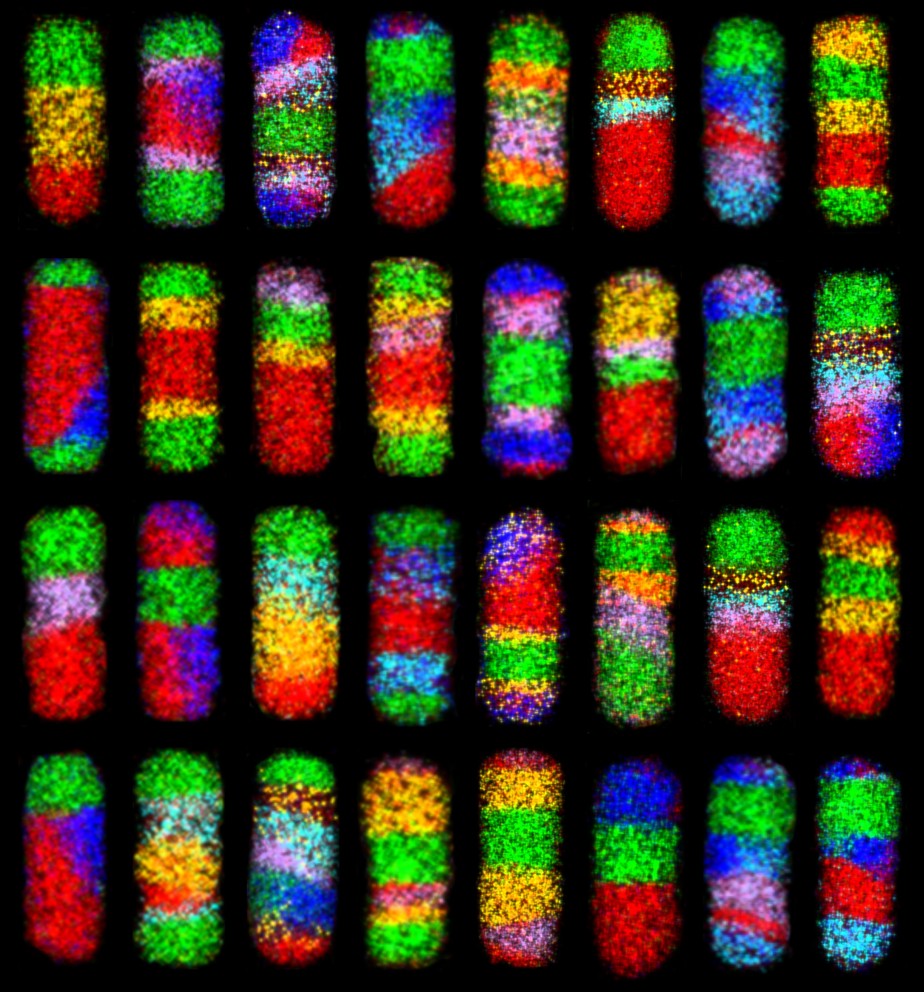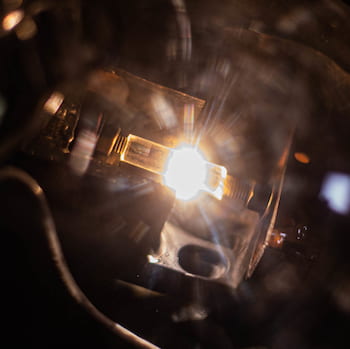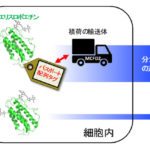2020-01-23 アメリカ合衆国・ペンシルベニ ア州立大学

・ PennState が、一般的な化学と様々な種類の組合せのモジュラー化を利用した、6 万 5 千種類を超える複合ナノロッドを作製するシンプルなアプローチを開発。
・ナノロッドのサイズは長さ約 55nm、幅約 20nm。最多で 6 種類の材料と 8 種類のセグメントを含み、電子・光学の両アプリケーションで利用できるインターフェースを備える。その多くは、これまで作製された中で最も複雑なナノ粒子と考えられる。
・異種の半導体を組合せることで材料中の電子の移動を制御したり、材料を異なる方法で配列することで光学・触媒・磁気特性を変更したりできることから、ナノサイエンスの分野では半導体、触媒や磁石等、数種類の材料を組合せたナノ粒子の作製に大きな関心が寄せられている。コンピューターと化学の知識を用いればこれらのほとんどを予測することは可能だが、実用できるサイズのナノ粒子の実際の作製は困難。
・今回、銅と硫黄から成るシンプルなナノロッドを用い、カチオン交換プロセスにより銅の一部を他の金属に置き換えた。反応条件を変えることで、ナノロッドの一端のみ、両端同時、中央のように、銅を置き換える場所を制御できる。
・同プロセスを他の金属を用いて繰り返し、ナノロッドの正確な場所に配置できる。数種類の金属を用いた最高 7 回の逐次反応により、6 万 5 千種類を超える組合せの金属硫化物材料を作製できる。
・同アプローチの利点は、簡便であること。これまでは、数種類の材料を含んだナノ粒子を 1 種類作るだけでも数か月から数年を要していた。
・同大学では 2 年前、同アプローチの初期バージョンにより 47 種類の金属硫化物ナノ粒子の作製に成功している。今回、飛躍的な技術進展によりさらに深くこれらのシステムを理解し、一般的な研究実験用ガラス器具と化学の基礎的な原理を用いて温度と濃度を制御するだけで、想像を超える複雑性を備えたナノ粒子を作製。
・また、同プロセスの合理性とスケーラビリティーも注目すべき点。プロセスの仕組を把握しているため、極めて複雑なナノ粒子を特定し、その製造方法を練り上げ、実用に適した量を研究室で容易に作製できる。ただし、使用可能な材料の種類の拡大が今後の課題。
・本研究には、米国立科学財団(NSF)資金を提供した。
URL: https://news.psu.edu/story/605294/2020/01/23/research/megalibrary-nanoparticles
(関連情報)
Science 掲載論文(アブストラクトのみ:全文は有料)Rational construction of a scalable heterostructured nanorod megalibrary
URL: https://science.sciencemag.org/content/367/6476/418
<NEDO海外技術情報より>
Abstract
Integrating multiple materials in arbitrary arrangements within nanoparticles is a prerequisite for advancing many applications. Strategies to synthesize heterostructured nanoparticles are emerging, but they are limited in complexity, scope, and scalability. We introduce two design guidelines, based on interfacial reactivity and crystal structure relations, that enable the rational synthesis of a heterostructured nanorod megalibrary. We define synthetically feasible pathways to 65,520 distinct multicomponent metal sulfide nanorods having as many as 6 materials, 8 segments, and 11 internal interfaces by applying up to seven sequential cation-exchange reactions to copper sulfide nanorod precursors. We experimentally observe 113 individual heterostructured nanorods and demonstrate the scalable production of three samples. Previously unimaginable complexity in heterostructured nanorods is now routinely achievable with simple benchtop chemistry and standard laboratory glassware.



